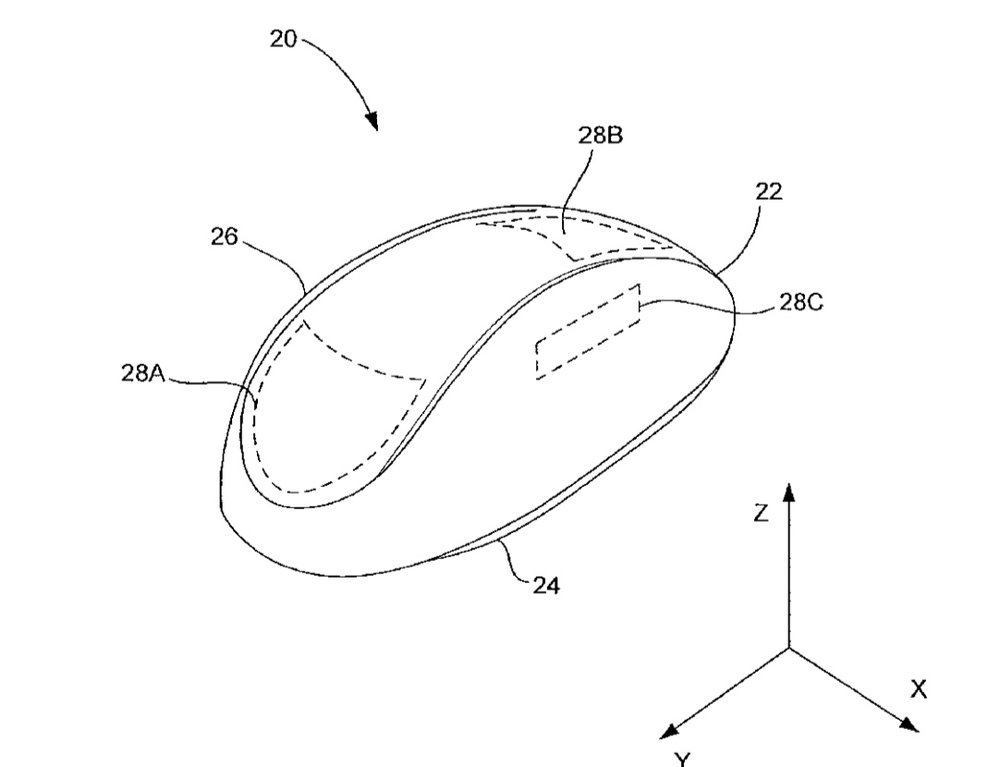Apple has been granted a patent (number 9,785,258) for an ambidextrous mouse configured for both left and right handed use with a Mac.
The mouse may include right handed buttons on the front side of the mouse and left handed buttons on the back side of the mouse. The user may change the handedness of the mouse by rotating the mouse about a vertical axis of the mouse such that the left hand can use the left hand buttons and the right hand can use the right hand buttons. The mouse may include a handedness selection system for configuring the mouse for right handed or left handed use even though the mouse has the capability for both right and left hands.

In the patent filing, Apple notes that most computer systems receive input from a mouse that typically includes a trackball or optical sensor (located at the bottom side of the mouse) for translating the motion of the users hand into signals that the computer system can use. The mouse also conventionally includes one or more buttons, which are located on the top side of the mouse.
These one or more buttons, when selected, can initiate a graphical user interface (GUI) action such as menu or object selections. The one or more buttons are typically provided by on or more button caps that move relative to the housing (e.g., through an opening in the housing).
Mice may also include a scroll wheel to give the user scrolling functionality. The scroll wheel saves time and steps, and allows a user to move through documents by physically rolling the wheel forward or backward-instead of clicking on the scroll bar displayed on the GUI. In the past, scrolling was implemented by selecting the scroll bar with the mouse, and moving the scroll bar on the GUI by moving the mouse up or down. What’s more, many popular mice offer an asymmetric shape that fits the asymmetric shape of the hand.
Apple says that, unfortunately, an asymmetric mouse is handed, i.e., it can only be used by a right or left hand. The company says there’s a need to improve their form, feel and functionality.
Of course, Apple files for — and is granted — lots of patents by the U.S. Patent & Trademark Office. Many are for inventions that never see the light of day. However, you never can tell which ones will materialize in a real product.
